Imperial enclosure and theatre
Theatre of Hue and Traditional Arts
For our final full day in Hue we took a taxi to the imperial city, this time going with food and leaving earlier so it wasn’t as hot.
We returned to the imperial enclosure and the Royal Theatre for the dancing we had missed. There was meant to be a 10am showing, but when we arrived those running the show said they needed at least five more people. Not to be put off, Sam set about recruiting these people, and she got enough interest that the show went ahead as planned.
The performance was by the Theatre of Hue and Traditional Arts, and many of the dances originated here as part of the imperial court. The theatre itself had row after row of red and golden chairs leading to an ornate stage with a throne at the centre. Dragons swirl about the edges, and upstairs a balcony surrounded the room. It had all been rebuilt on former foundations, and had originally started in 1826.

The opening act saw four men, dressed in red and gold robes, playing traditional instruments. A simple introduction that made way to a dragon dance. Two large dragons, one yellow, one green, each moved by two dancing people, swayed and pranced about the stage, behaving as if they were real, a convincing illusion. Their giant heads swayed to the beat of a carnal drum, and they ceremoniously mated to magically produce a baby dragon. It was all very impressive.
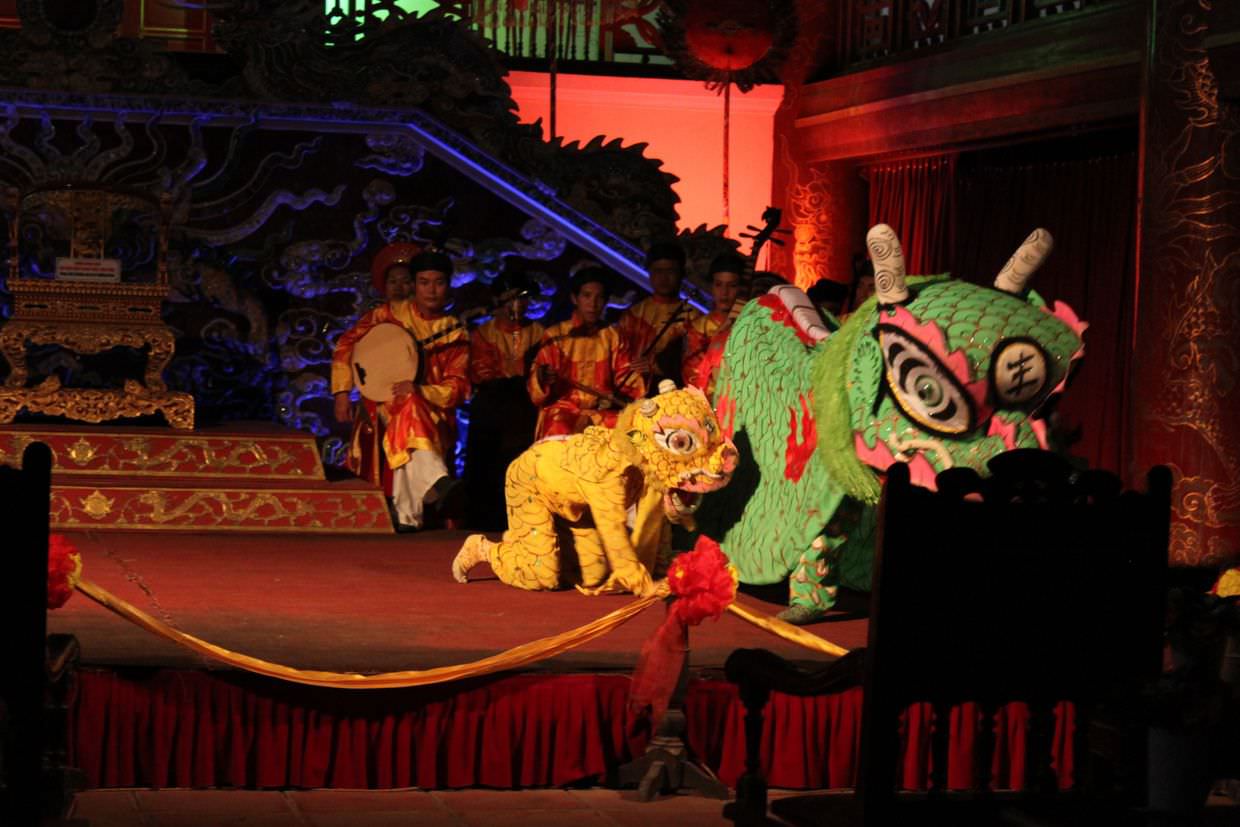
The second dance was a fan dance (vũ phiến), and eight ladies in pink, with yellow fans in each hand and blue headdresses swirled and moved to create undulating repeating patterns. They’d line up and create cascading fan effects, rippling down the line in a manner that felt natural and harmonious, as if one.
A nine piece instrumental act followed, with even more weird and wonderful instruments I’d never seen or heard before. And then to the finale, a sixteen person lantern dance (lục cúng hoa đăng), all the lights dimmed, and in each hand they held a candle. Moving in the dark, the flames floated, creating magical shapes; the dancers lifted each other up, higher and higher, making ever more strange and interesting compositions of light, all to traditional live music.
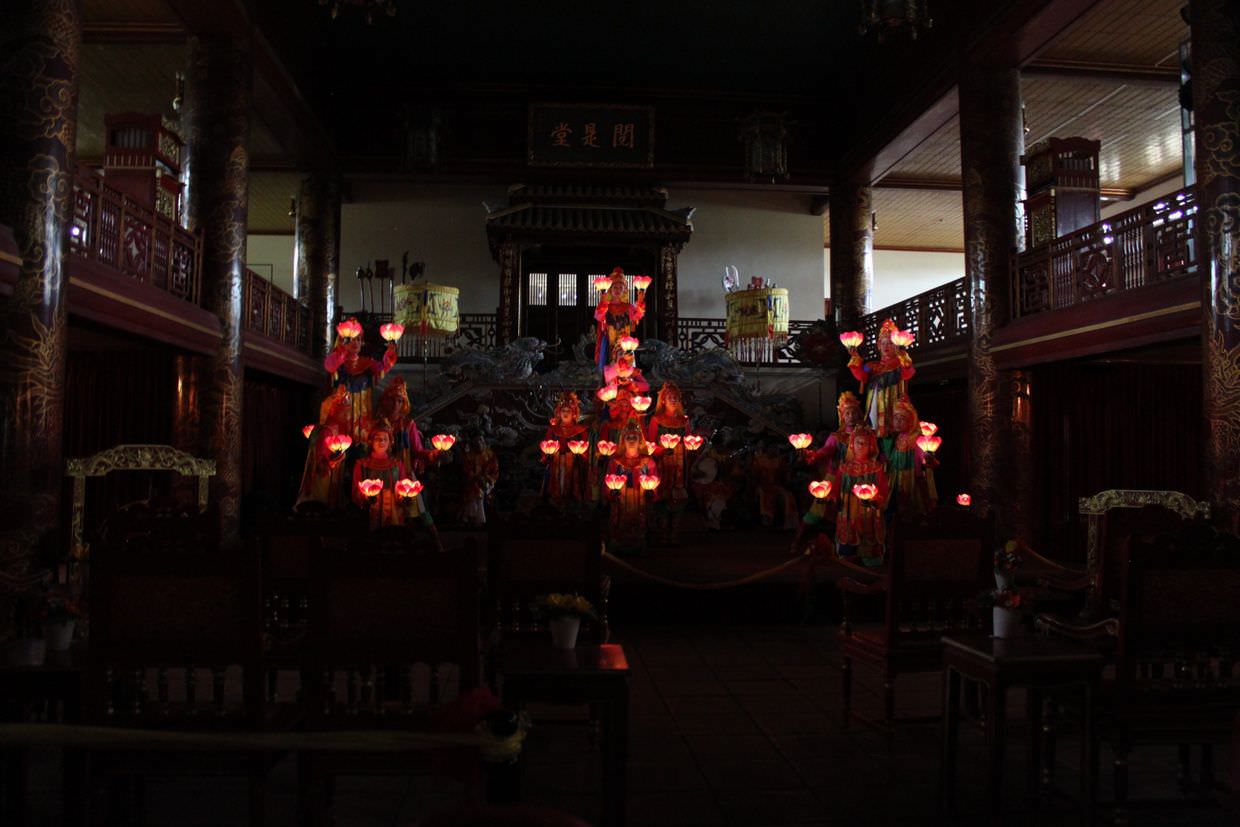
Imperial enclosure
Only half an hour long, it was very good, and worth the early morning and 70,000 dong. Leaving the theatre, we went East, to the ruins of the Thai to Mieu temple, which is now a beautiful little garden, nursing new trees and bonsai trees alike. A bamboo bridge had been built across a small lagoon, in the centre of which a new temple was being constructed. Purple water lilies flowered below.
University of Arts
We followed the road around the edge of the enclosure, past the University of Arts and to the West corner, and the restored Truong San residence. Although the buildings were beautiful, they were themselves empty, dark and echoey inside. Still water surrounded them, like a moat, and filled with purple flowers. A young girl and her mum played amongst the yellow walled, red doored buildings of the house, flowers in their hair, sitting on the steps and being cute for the camera. The walls were rich with colour, blue shapes marked into yellow walls, sculptures standing tall on ornate gateways. On the rooftops, gaudi-esque dragons clamber from the corners, and blue marbled sculptures are embedded in the walls. The old, original imperial city must have been very special.
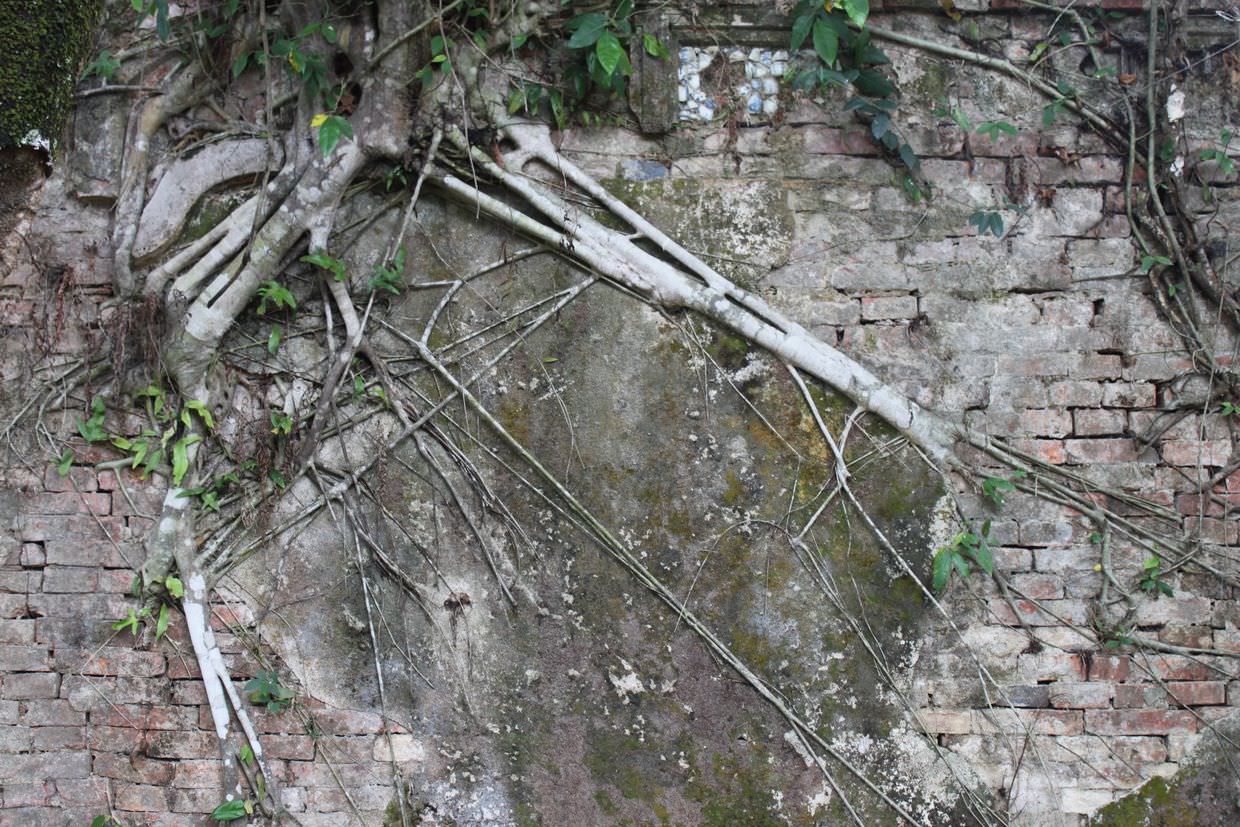

Dien Tho residence
We walked south to the Dien Tho residence, this was larger and just as beautiful, with wooden rooms, and a wooden ‘pleasure pavilion’ atop a small pond.
To Mieu temples
And from here we found ourselves where we left off on Thursday, the To Mieu Temple complex. This complex is beautifully restored, and seemingly escaped most of the bombing. In a courtyard, nine unique bronze urns line the front of a temple, and two dragons sit in red phone boxes to the left and right, staring at each other, as they do. On one side, the dark red To Mieu temple, on the other the three tiered Hien Lam Pavilion.
We had to take our shoes off before entering the temple which houses shrines and dedications to each of the former emperors. Each shrine is placed in a line, with a portrait on top. The ceilings and columns are a deep red, with golden engravings and ribbons. Red and gold everywhere.
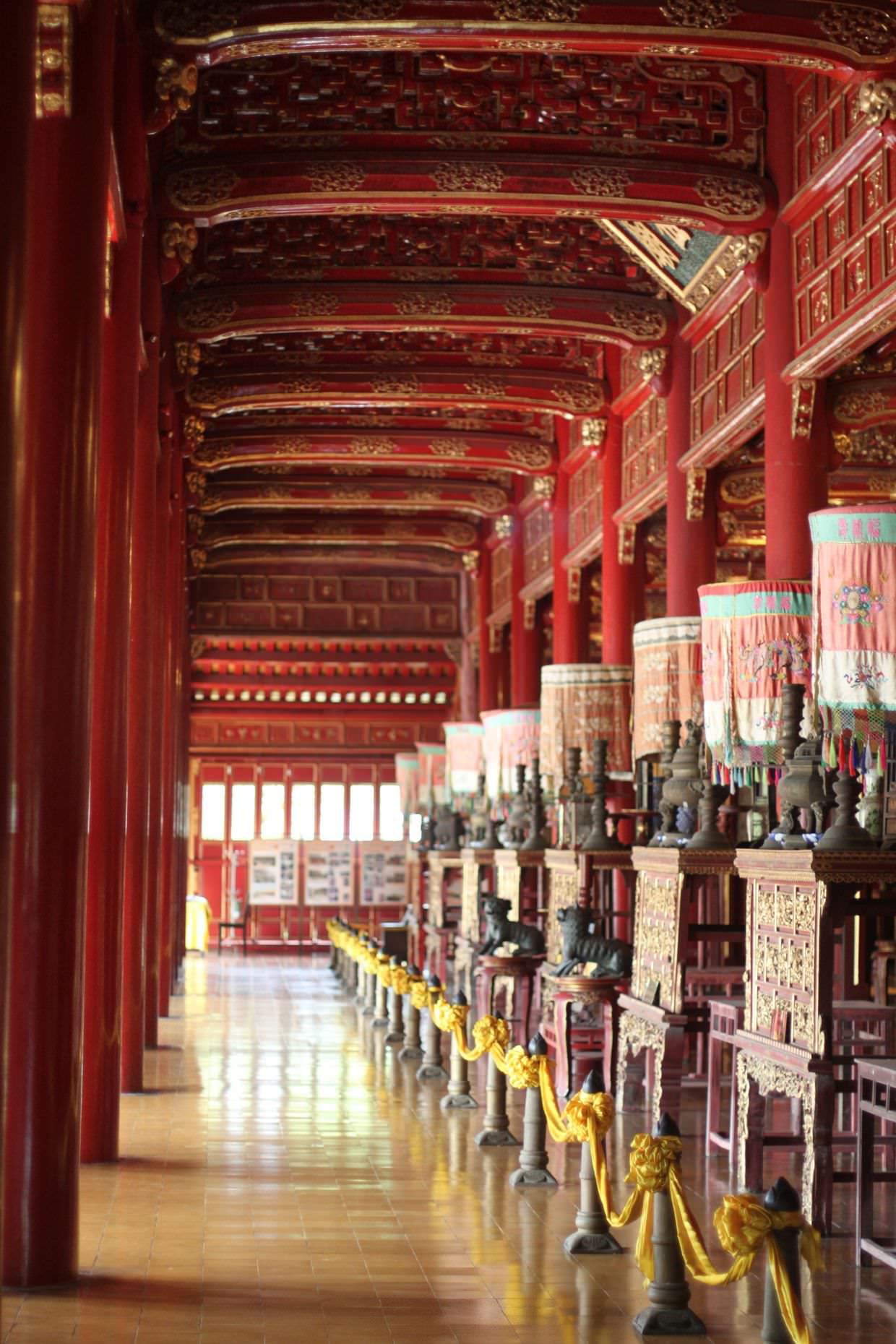
Outside the pavilion a local art class were sketching their own interpretations of dragons, bronze urns and the buildings. Younger children sat on the dragon balustrades, pretending to ride them. Of course Sam had to have a go too.
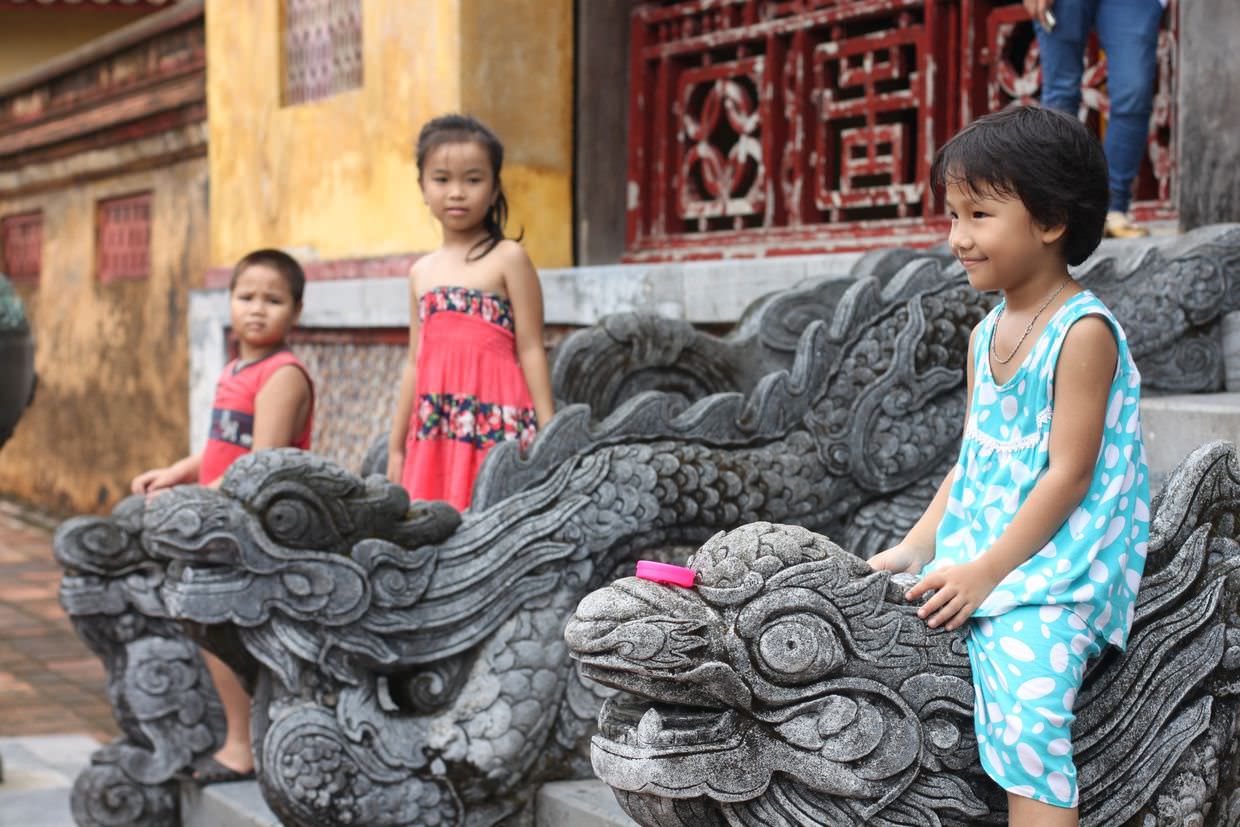
And now we had seen all four corners of the enormous imperial city. We left via the central temple, then out through the north exit and a little cafe on the north most wall where we had Vietnamese coffee. Outside it started to rain.
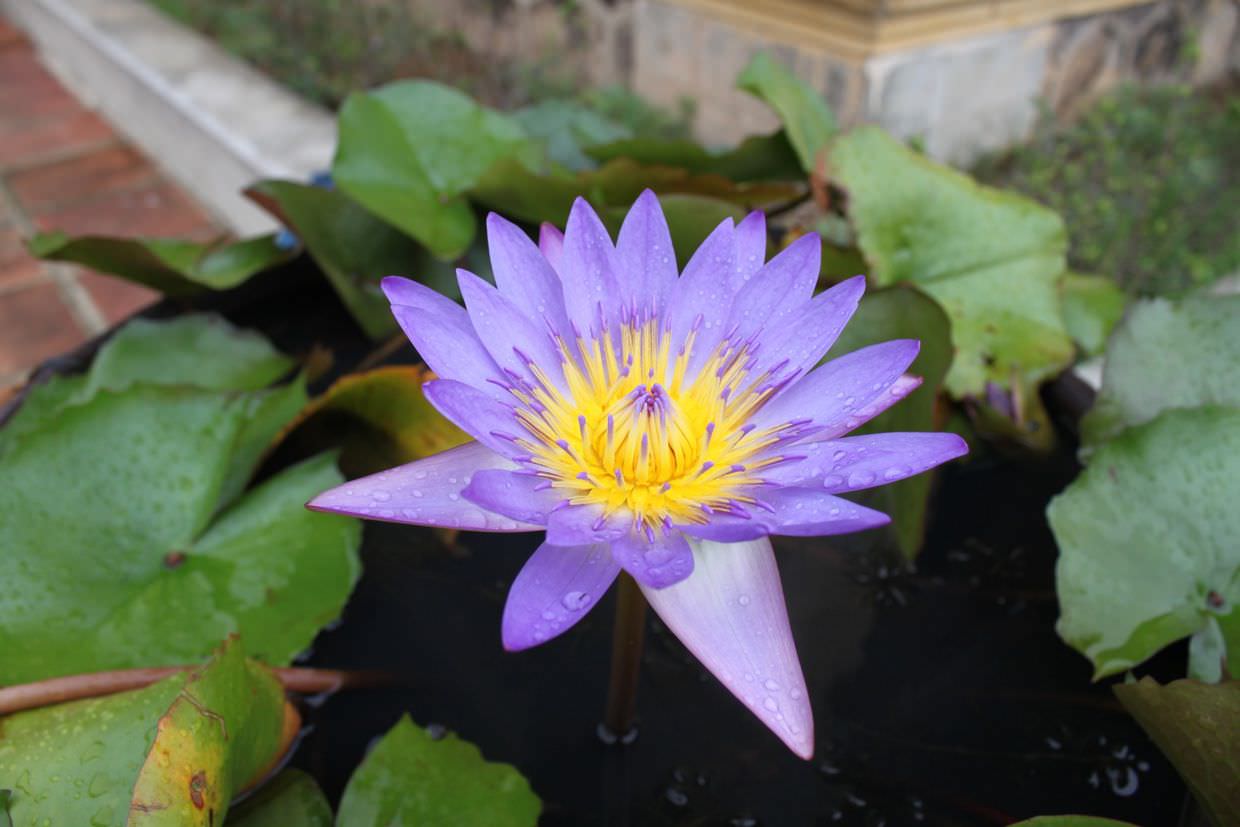
Exploring the citadel
Hungry, we set about exploring the eastern part of the citadel, the city beyond the imperial enclosure. It was much like the rest of Hue, streets of shops, sometimes lined with trees, most with traffic problems or crazy mopeds mounting kerbs.
We found a two tiered local restaurant for lunch, Ngo Co Nhan, with very cheap spring rolls and rice. We sat upstairs, on a bamboo balcony beneath a straw roof. Next to us a group of four men were jovial, at the foot of their table a towering crate of Tiger beer already finished, at least 16 bottles between them. And more on the way. The waitress sat in the corner watching a mounted TV, Hot Shots was on, Ramona was talking to Topper Harley. She didn’t laugh at any of the jokes. On our way out, downstairs, another couple had been drinking a lot too, about six bottles each this time.
Nearby we heard a school reciting a daily ritual, walking past, we saw Ho Chi Minh’s portrait sitting above the blackboard. Outside were toy shops. We continued south, following the main roads, exiting the Citadel, and turning left to find Dong Ba market. We used a local to shield us crossing the busy road.
The market was a network of thin partially covered alleyways, stalls clambering for business, business men holding wads of cash, women shouting for you to buy their food, or hat, or chopsticks, or fruit. Hue is known for it’s Vietnamese hats, you can get nice ones that have patterns when held up to the light. We found one and bargained for it, we got the price down to one we wanted to pay, though I’m sure it could have been cheaper. That perpetual Vietnamese feeling that somehow you’re being ripped off, even if you’ve bought a hat for £1. The hat was big, bulky and wonderful. It lasted our entire holiday and sits with pride and place on our wall in our flat. I didn’t think it would last beyond Hue.
We took a taxi back to the hotel, Sam relaxed by the pool while I uploaded photos to Dropbox, a continuous backup of our images as we go - but time consuming and troublesome using an iPad to do it.
Le Parfum (again)
Our Lonely Planet food recommendations had let us down on a couple of occasions, and Trip Advisor reviews weren’t being helpful either. In the end we settled on another meal at the hotel. Expensive, but the first night’s food was fabulous gourmet, and we wanted more of the same. Sadly the food wasn’t as great as before. Nestled in a quiet corner of the restaurant, I had the pan fried Mahi Mahi with chocolate and vietnamese coffee. And Sam had Grilled Pork Mousse on lemongrass skewer - a rather unceremonious reformed pork ball on a stick. But our starters, duck foie gras and traditional spring rolls, were lovely, as too was the Kir Royale we treated ourselves to.
We retired to the bar for a couple of games of pool and called it a night, our last night in Hue, ready for another adventure elsewhere.